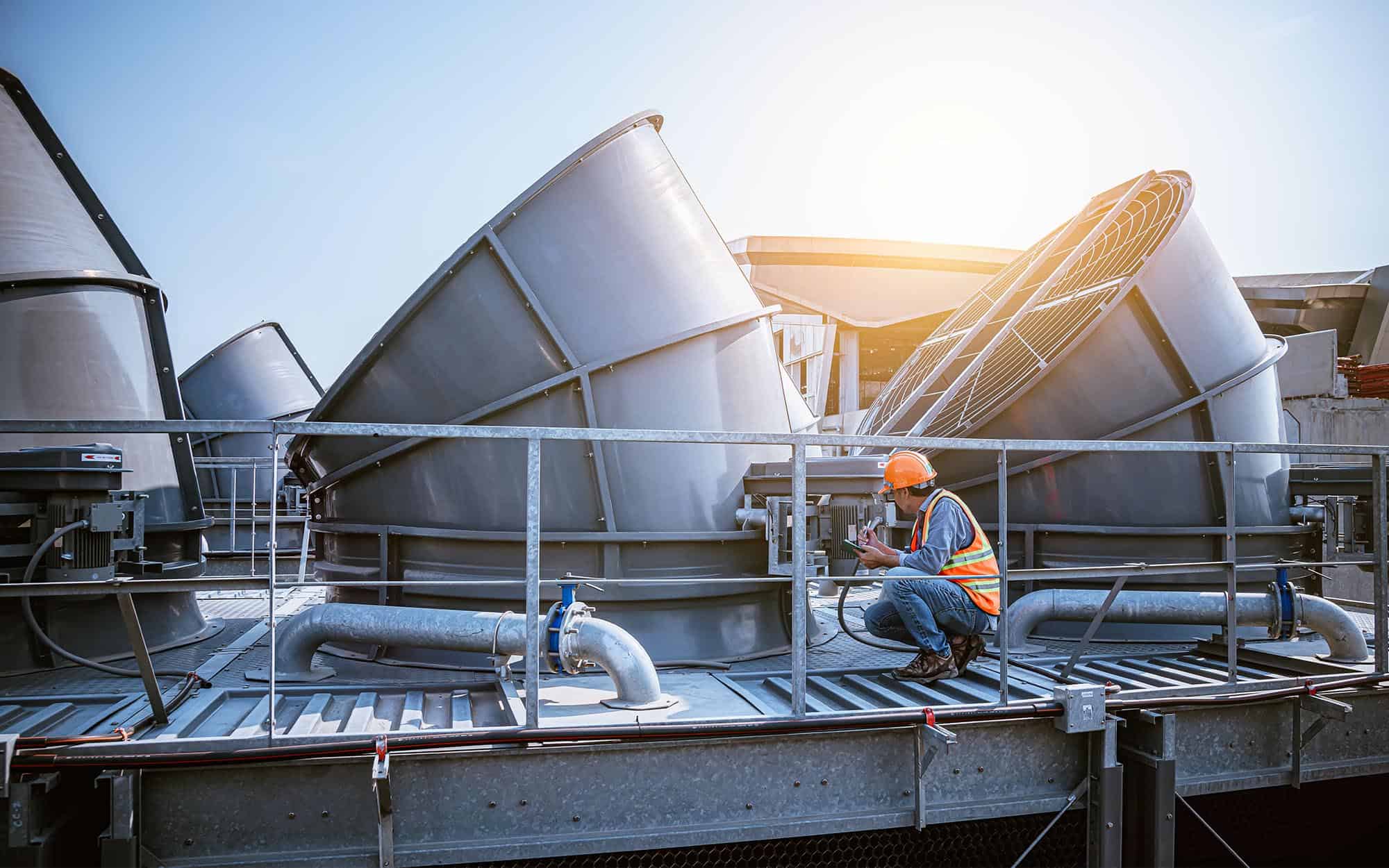
How efficient is your building’s heating and cooling system? Does it seem to run just fine, or does it tend to overheat and break down when the weather gets too extreme?
Here’s an important one: Do you have cooling towers installed to help reduce the strain on your HVAC system in the summer?
If you don’t already have cooling towers installed, now is the perfect time; they help make your system more efficient and less prone to breakdowns. If you already have cooling towers in use, start taking care of your HVAC cooling tower maintenance and repairs as soon as possible. Warmer weather is right around the bend—it’s better to get prepared now so you don’t have to scramble later.
Still not convinced? This article will help you learn about HVAC cooling towers so you can decide if they’re right for you.
Understanding the Key Functions Behind HVAC Cooling Towers
It takes a lot of energy to cool a large space, especially on hot days. This can put a strain on a commercial HVAC system, but cooling towers make an air conditioning system more effective and energy efficient. They are designed to manage a specific cooling load, and the size for each is determined by the size of the space being cooled, relative humidity, and several other factors.
How Does a Cooling Tower Work for HVAC Systems?
Commercial cooling towers eliminate excess heat from chillers by transferring the heat away through evaporation. Evaporation is actually referred to as a “cooling process” because it naturally removes heat from the air. As water absorbs energy (heat), that water evaporates. Cooling towers make use of this natural process in a specifically targeted manner.
Here’s how an HVAC cooling tower works. First, water is pumped all the way to the top of the cooling tower. Then it travels down to the basin overflow plates or through warm coils. At the same time, a heat exchanger flows cool air through the flow plates (or moves cold water through the coils) and across the water, which creates the perfect mix of warm water and cool air that releases the heat through evaporation.
What Types of Businesses Use HVAC Cooling Towers?
Commercial cooling towers are most commonly used in facilities that use process cooling and to control the climate in large buildings. An example of buildings that make use of cooling towers includes:
- Steel mills
- Power plants
- Manufacturing plants
- Food processing facilities
- Refineries
- Natural gas processing plants
- Schools
- Airports
- Courthouses
- Museums
- Hotels
- Office buildings
- Convention centers
These are just some examples of types of businesses that use cooling towers to control the climate better inside their large buildings.
Why Does My Building Need HVAC Cooling Towers?
As discussed earlier, cooling towers will help make your HVAC system more efficient. When your HVAC system uses less energy, your energy bills will be lower, but more importantly, there will be less stress on your HVAC system.
When you reduce the strain on your HVAC system, it doesn’t have to work as hard to cool your building when it gets really hot. Offloading the excess heat from your system will keep it running smoothly, and will prevent unexpected breakdowns from overuse.
Four Tips to Better Approach Your Cooling Tower Maintenance
Consider cooling towers to be their own system in addition to your HVAC system. Even though they work together, they are two separate systems that require separate maintenance. Hopefully, you’re already performing maintenance on your HVAC system, so don’t forget to maintain your cooling towers, too.
Here are some tips for maintaining your commercial cooling towers:
1. Clean your cooling towers regularly.
When you have cooling towers, you’re going to have pools of water that stand for a long period of time. Pooled water is susceptible to bacteria growth, which includes the Legionella bacteria, so it’s important to disinfect this water about every six months. You don’t want to be the cause of an outbreak of Legionnaires’ disease. Since heat plays a major role in the growth of this bacteria, the CDC recommends using water that is heated to the bare minimum required to do the job.
In addition to disinfecting the water, you’ll want to circulate a chemical cleaning solution through the system and then flush it out when you’re done. To clean the inside of the towers, you can use a pressure washer or an industrial vacuum to suck out various contaminants.
2. Have your cooling towers inspected regularly.
It’s important to have an HVAC professional inspect your cooling towers on a regular basis so they can spot problems before they become serious. Inspections can also be combined with routine maintenance adjustments to your fans, belts, motors, and electrical components.
3. Remove the mineral buildup at least twice a year.
Over time, the minerals in the water will stick to the walls of your cooling towers. This build-up will reduce the efficiency of your cooling towers. At least twice a year, remove the mineral build-up from inside your towers.
4. Treat the water you use in your cooling towers.
Cooling towers are more likely to break down when the water used is of poor quality. By treating the water, you’ll keep your water quality high and prevent breakdowns. You should treat the water in your cooling towers monthly.
Is Your HVAC Cooling Tower Overdue for a Tune-Up?
When’s the last time you had your cooling towers maintained? If you can’t remember or it’s been over a year, then you’re overdue for a service appointment.
At React, we take pride in helping NYC businesses stay ahead of costly HVAC issues. That’s why we offer a full-suite of maintenance programs, where our experts inspect, repair, or perform tune-ups for your systems. Contact us today to learn more about our customized HVAC maintenance plans, and let’s develop a program to keep your system running smooth all year round.